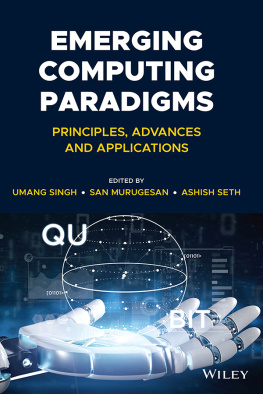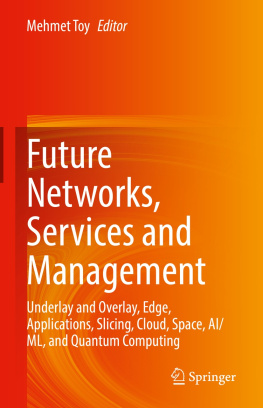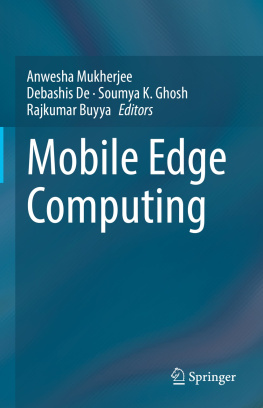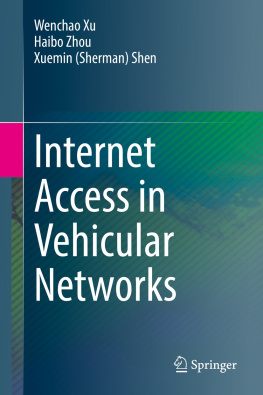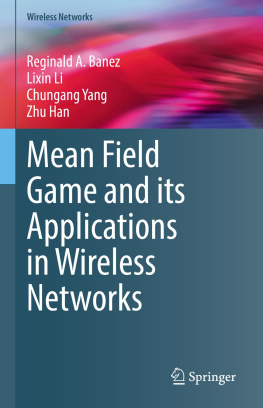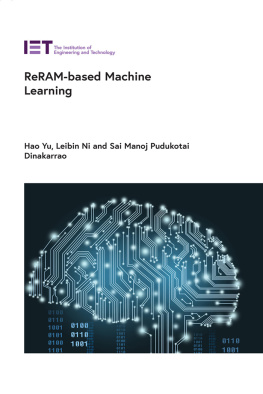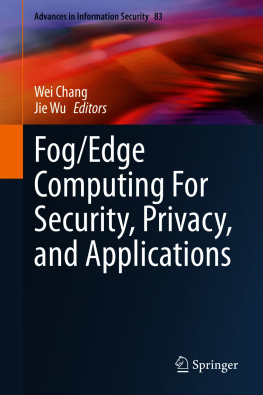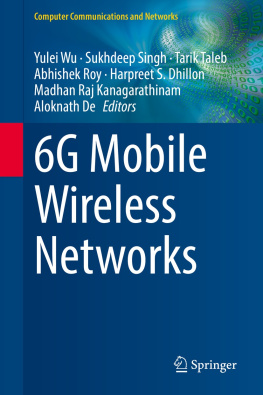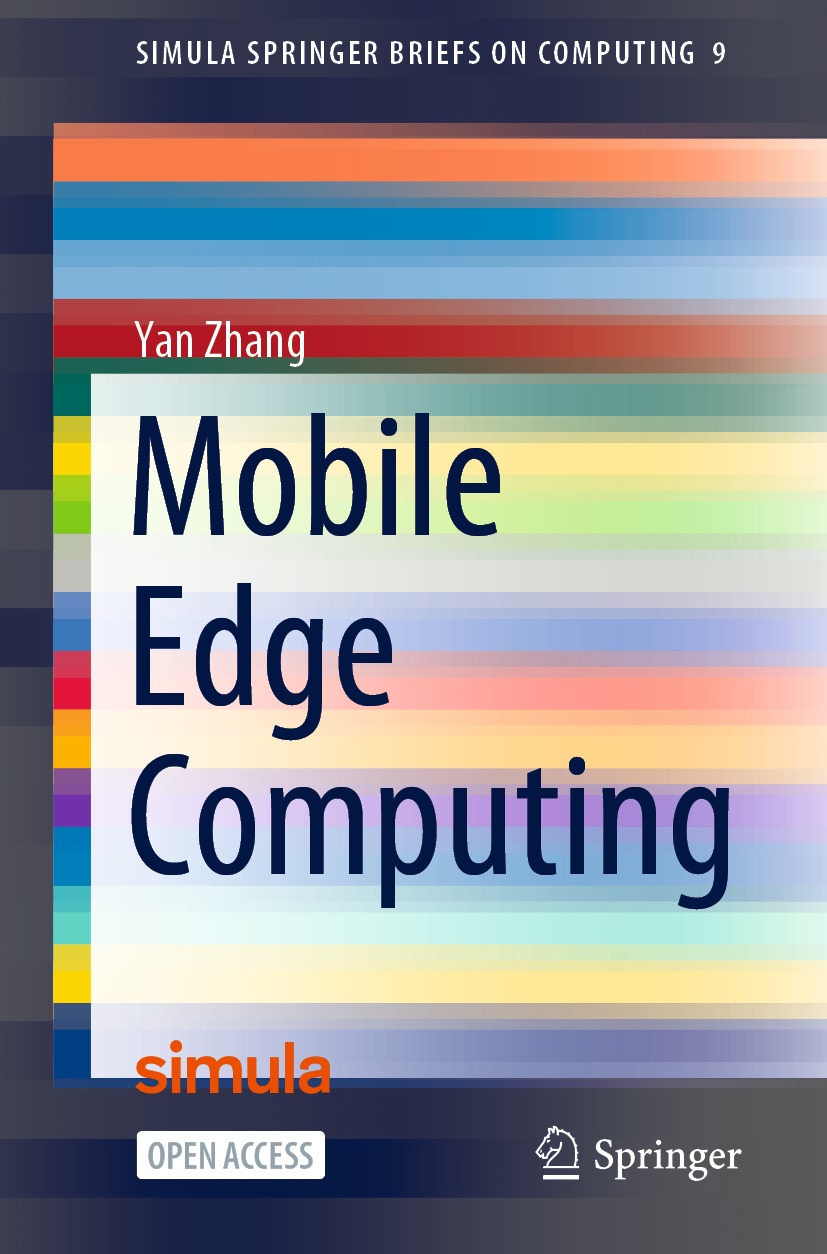Volume 9
Simula SpringerBriefs on Computing
Editor-in-Chief
Aslak Tveito
Simula Research Laboratory, Fornebu, Norway
Series Editors
Are Magnus Bruaset
Simula Research Laboratory, Fornebu, Norway
Kimberly Claffy
San Diego Supercomputer Center, CAIDA, University of California, San Diego San Diego Supercomputer Center, CAIDA, San Diego, CA, USA
Magne Jrgensen
Software Engineering, Simula Research Laboratory, Fornebu, Norway
Olav Lysne
Simula Research Laboratory, Fornebu, Norway
Andrew McCulloch
Bioengineering 0412, University of California, San Diego, La Jolla, CA, USA
Fabian Theis
Institute of Computational Biology, Helmholtz Zentrum Mnchen, Neuherberg, Germany
Karen Willcox
Department of Aeronautics & Astronautics, Massachusetts Institute of Technology, Cambridge, MA, USA
Andreas Zeller
Saarbrcken, Germany
Springer and Simula have launched a new book series, Simula SpringerBriefs on Computing, which aims to provide introductions to select research in computing. The series presents both a state-of-the-art disciplinary overview and raises essential critical questions in the field. Published by SpringerOpen, all Simula SpringerBriefs on Computing are open access, allowing for faster sharing and wider dissemination of knowledge.
Simula Research Laboratory is a leading Norwegian research organization which specializes in computing. The book series will provide introductory volumes on the main topics within Simulas expertise, including communications technology, software engineering and scientific computing.
By publishing the Simula SpringerBriefs on Computing, Simula Research Laboratory acts on its mandate of emphasizing research education. Books in this series are published only by invitation from a member of the editorial board.
More information about this series at http://www.springer.com/series/13548
Yan Zhang
Mobile Edge Computing
1st ed. 2022

Logo of the publisher

Logo of the publisher
Yan Zhang
Department of Informatics, University of Oslo, Oslo, Norway
ISSN 2512-1677 e-ISSN 2512-1685
Simula SpringerBriefs on Computing
ISBN 978-3-030-83943-7 e-ISBN 978-3-030-83944-4
https://doi.org/10.1007/978-3-030-83944-4
The Author(s) 2022
This book is an open access publication.
Open Access This book is licensed under the terms of the Creative Commons Attribution 4.0 International License ( http://creativecommons.org/licenses/by/4.0/ ), which permits use, sharing, adaptation, distribution and reproduction in any medium or format, as long as you give appropriate credit to the original author(s) and the source, provide a link to the Creative Commons license and indicate if changes were made.
The images or other third party material in this book are included in the book's Creative Commons license, unless indicated otherwise in a credit line to the material. If material is not included in the book's Creative Commons license and your intended use is not permitted by statutory regulation or exceeds the permitted use, you will need to obtain permission directly from the copyright holder.
The use of general descriptive names, registered names, trademarks, service marks, etc. in this publication does not imply, even in the absence of a specific statement, that such names are exempt from the relevant protective laws and regulations and therefore free for general use.
The publisher, the authors and the editors are safe to assume that the advice and information in this book are believed to be true and accurate at the date of publication. Neither the publisher nor the authors or the editors give a warranty, expressed or implied, with respect to the material contained herein or for any errors or omissions that may have been made. The publisher remains neutral with regard to jurisdictional claims in published maps and institutional affiliations.
This Springer imprint is published by the registered company Springer Nature Switzerland AG
The registered company address is: Gewerbestrasse 11, 6330 Cham, Switzerland
Preface
This book offers comprehensive, self-contained knowledge on Mobile Edge Computing (MEC), a very promising technology for achieving intelligence in next-generation wireless communications and computing networks. With the rapid development of beyond 5G/6G and the Internet of Things, increasing number of smart devices are being deployed at the edge of networks. Due to the enormous amount of data and long transmission distances, centralized computing mechanisms incur high latency and network congestion. By placing the computing and storage resources closer to the users, MEC can significantly increase performance in terms of low latency, reduced communications overhead, and high-quality user experience. Further, processing data on edge devices will enhance system security and data privacy.
This book allows for easy cross-referencing owing to the broad coverage on both the principle and applications of MEC. It covers the basics, essential topics, and future directions of MEC. It also details the design and implementation of communications, computing, and caching in MEC. The book starts with the basic concepts, key techniques, and network architectures of MEC. Then, we present the wide applications of MEC, including edge caching, 6G networks, the Internet of Vehicles, and unmanned aerial vehicles. In the last part, we present new opportunities when MEC meets blockchain, artificial intelligence, and distributed machine learning (e.g., federated learning). We also identify the emerging applications of MEC in a pandemic, the Industrial Internet of Things, and disaster management.
The objectives of this book are to provide the basic concepts of MEC, to explore the promising application scenarios of MEC integrated with emerging technologies, and to give insights into the possible future directions of MEC. For better understanding, this book also presents a few use cases of MEC models and applications in different scenarios. The primary audience includes senior undergraduate and postgraduate students, educators, scientists, researchers, engineers, innovators, and research strategists. This book is mainly designed for academics and researchers from both academia and industry who are working in the field of wireless networks and edge intelligence. Students majoring in computer science, electronics, and communications will also benefit from this book. The content of this book will also be useful for senior undergraduate students, graduate students, and faculty working in MEC.
Yan Zhang
Oslo, Norway
Acknowledgements
This book was mainly written during the COVID-19 period, and the writing took much longer than expected. My gratitude goes out to all of my excellent students and research collaborators. I appreciate all their contributions of time, discussions, and ideas that made this book possible. Our joint publications in IEEE journals and conferences provided solid, high-quality material for the book.





